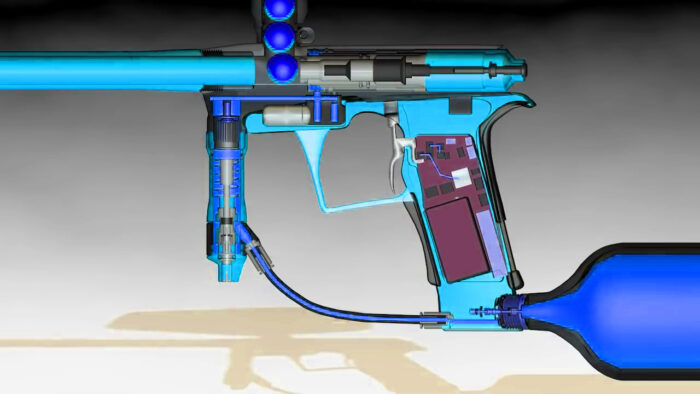Paintball Manufacturing and Materials
Paintball manufacturing is a complex process that involves multiple stages, from designing the marker to assembling the various components. One important aspect of paintball manufacturing is choosing the right materials for each part, including the barrel. The material used for the barrel can affect various properties of the marker, such as weight, accuracy, and durability.
Some common materials used for paintball barrels include aluminum, brass, stainless steel, carbon fiber, titanium, and ceramic. Each material has its own unique characteristics and benefits, such as aluminum’s lightweight and corrosion resistance or brass’s durability and stability. Manufacturers must carefully consider these factors when selecting materials for their paintball markers and barrels to ensure that the end product meets the needs of the players.
They also must use advanced machining techniques and quality control measures to ensure that each barrel is made to precise specifications and performs consistently on the field. With the right combination of materials, design, and manufacturing processes, paintball manufacturers can produce high-quality, reliable markers that enhance the player’s performance and enjoyment of the game.

Here’s some information about the materials commonly used in the manufacturing of paintball markers:
- Aluminum:
Aluminum is a lightweight and durable material that is commonly used for the manufacturing of paintball markers. It is
relatively easy to machine and can be anodized to improve its appearance and corrosion resistance.
- Stainless Steel:
Stainless steel is another popular material used in the
manufacturing of paintball markers. It is known for its strength, durability, and resistance to corrosion, making it an excellent choice for parts that may be exposed to moisture or harsh conditions.
- Composite Materials:
Some paintball markers are manufactured using composite materials such as carbon fiber or fiberglass. These materials
are lightweight, strong, and have a high strength-to-weight ratio. They are often used in high-end markers that require maximum performance.
- Plastic:
Some paintball markers are made from plastic, which is a lightweight and inexpensive material. While not as durable as aluminum or steel, plastic can be a good choice for entry-level markers or markers intended for younger players.
- Brass:
Brass is a popular material for manufacturing paintball barrels. It is known for its consistency and accuracy, making it a good choice for barrels that require precision.
- Ceramic:
Ceramic barrels are becoming increasingly popular in the paintball industry due to their smooth, consistent bore and improved accuracy. Ceramic barrels are also lightweight and durable, making them an excellent choice for high-end markers.
- Titanium: Titanium is a lightweight and extremely strong metal that is used in some high-end paintball markers. It is more expensive than other materials, but offers excellent durability and corrosion resistance.
Manufacturers often use a combination of these materials to create paintball markers that are lightweight, durable, and accurate. The choice
of materials will depend on the intended use of the marker, the performance requirements, and the budget of the manufacturer.
